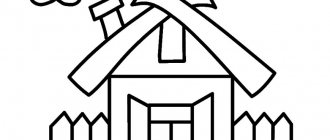Scientific Style: Freepick Did your teacher or supervisor send your report back for revision because of the presentation style? Abstracts and term papers, graduation projects - all this is written by schoolchildren and students using a scientific style. Examples from articles, monographs, textbooks and manuals will help you understand how a scientific style text differs from a regular one and how to create it.
Step 1: what is actually being stated here?
Any explanation of complex material, be it a school lesson or a scientific publication, begins with the formulation of a certain statement, which is then explained, proven, and illustrated with examples. Therefore, the first level of understanding is when the reader realizes what is actually being asserted here. And situations of complete misunderstanding often come down to the fact that a person simply does not grasp the very essence of the statements, and hears something other than what they are trying to convey to him.
For example, a popular question is: “Why can’t you divide by zero?” - a typical example of a misunderstanding of the statement itself left over from school.
A person thinks that he is forbidden to divide, forbidden to take one extra step and further determine the division process. He demands to be allowed and asks what the answer will be. But the real statement is completely different: any one-step additional definition will lead to an internally contradictory construction. You cannot assign the result of the operation 1/0 to any real number, because then you would violate the multiplication axioms established for all real numbers. You can designate the result with a new word "infinity", but this is only the first step. After all, next you will need to introduce rules for working with this infinity, which will differ from the rules for working with ordinary numbers, determine what equals infinity multiplied by zero, and decide how many “infinities” you will enter. No matter how you twist it, you will end up with a new number system with its own strange rules. It is this fact that is expressed by the phrase “you cannot divide by zero.”
Here’s an example from an academic environment: a person gives a report, and the entire audience looks at the slides with an unblinking, dazed gaze in complete silence. If you pull the listener out in this state and ask him to immediately say something about any of the slides, then after several minutes of torment he will begin to ask: what is this letter? what is this term? Where does this formula even come from? Here we have a classic example of a person - and perhaps the entire audience - not understanding what is being said at all. Let me emphasize that the problem here is not that the presentation is boring. The listener tries to follow the presentation, but if he missed something important from the very first minutes, he may completely cease to understand what is being said.
I am convinced that the first level of understanding is available to the interested listener on any scientific topic. He may not know the terminology or understand the technical details, but if you formulate in clear, simple words what was essentially done here, he will understand it.
Therefore, any popular science text should strive to convey to its readers the main idea at least at this first level of understanding. If the typical reader, a representative of the target audience, does not understand what it is about at all, the mission of the news will fail, no matter how smart the text itself may sound.
Here, for example, is a paragraph from a very short news story written in complex language:
“It turned out that in such a system it is impossible to obtain a completely conducting state in which single Dirac points would appear (the reason is again symmetry). However, such materials may be topological insulators or Weyl phases. The first are characterized by the fact that they have a conducting surface, but remain insulators in the bulk, and in the second, conducting quasiparticles arise that behave as if they have no mass.”
Do you understand right away what is possible, what is impossible and why? This paragraph will, of course, be clear to a specialist in condensed matter physics, but not to a non-specialist reader. In this paragraph there is such a high concentration of terms per line of text; they are introduced so quickly and with such meager explanations that the reader is simply unable to digest them.
What styles exist in Russian?
There are 5 storytelling styles in Russian:
- Official business.
- Journalistic.
- Colloquial.
- Art.
- Scientific.
Styles differ in the scope of use, purpose of presentation, lexical features and sentence construction.
Let's take a closer look at the characteristics of each type.
Scientific
Area of use: educational literature, research, dissertations, theses, scientific articles.
The goal is an evidential presentation of scientific material, a description of the patterns of phenomena.
The scientific style is distinguished by preliminary consideration of the statement and strict selection of linguistic means. Vocabulary is characterized by:
- special terminology;
- complex sentences;
- long paragraphs;
- there are more nouns than verbs;
- impersonality - instead of “I”, “we” is used.
The scientific style is characterized by accuracy, strict logic, and clarity of presentation.
Types of scientific style
Official business
This style is used for writing documents, laws, official papers and letters, orders, resolutions, notifications, complaints, statements, reports, invoices. The goal is accurate communication of business information.
Lexical features:
- lack of emotionally charged vocabulary,
- standardized figures of speech - clericalisms;
- stable expressions - cliches.
The style is characterized by formulaic designs and a clear sequence of presentation.
Types of formal business style
Art
Used in works of art: novels, stories, poems, poems. This is the language of writers and poets.
The goal is to influence the reader’s imagination and feelings, as well as inform him about something. Each writer has his own individual style, which includes colloquial, high vocabulary, and neutral words.
Main features of the style:
- use of a large number of means of expression;
- using words in a figurative sense;
- allegory, metaphor;
- abundance of epithets and adjectives;
- imagery and emotionality.
In addition to information, the text has an aesthetic function.
Varieties of artistic style
Journalistic
This is the style of newspapers, magazines, news portals, that is, the media. The purpose of the text is to influence the reader’s emotions, to draw attention to a certain problem or phenomenon.
The journalistic style is characterized by:
- socio-political vocabulary;
- consistency;
- imagery;
- emotionality;
- evaluativeness;
- conscription.
It is distinguished by a variety of topics that are usually relevant at a given moment in time: political, moral, social, everyday. The text contains an appeal to the reader's mind and feelings. Designed for a wide audience.
Genres of journalistic style
Colloquial
Conversational style is used in everyday life. People share their thoughts and feelings with others, exchange information on everyday issues, and use colloquial and colloquial vocabulary.
It is a style that reflects the speech of people in writing. The vocabulary is taken from everyday life and contains an abundance of colloquial and colloquial words. This is a style of oral speech, in the text version it is used in a blog, in communication on forums. Used to create a relaxed atmosphere.
The purpose of the text is to convey an informational message, exchange thoughts and feelings, and solve everyday issues.
This style is characterized by:
- emotionality;
- imagery;
- colloquial vocabulary;
- text without choice of words;
- colloquial words;
- slang.
This is a style of oral speech, in the text version it is used in a blog, in communication on forums. A striking example is dialogue.
Loading …
Conversational style features
Steps 2 and 3: chain of arguments
The next two steps are when you first understand the individual episodes of the explanation and, finally, when you understand the entire continuous chain of arguments. These two steps sound similar, but there are significant differences between them.
Step 2 - flashes of understanding : “yeah, this point seems to be clear,” “oh, I’ve already heard this argument,” “yes, the words are familiar, it sounds kind of logical.” The main point here is that the stated statement is harmoniously combined with other facts known to you and does not cause rejection. The new statement does not hang in emptiness, but somehow fits into the system of your knowledge. You feel where this fact can be placed in your head, and perhaps, on occasion, you can mention it appropriately.
However, these flashes of understanding are not connected in a single line. You will not be able to reproduce the general outline of the explanation from beginning to end. When you start doing this, you will immediately have doubts or questions for yourself that you will not answer.
The third stage is when episodic glimpses of understanding are woven into a through thread of narrative that seems clear to you. You feel comfortable in this end-to-end chain of argument. You can walk along it, you can return to the starting point. Maybe you still stumble at some points, but in general you easily glide from a new fact to other facts you know and back. When you listen to a science seminar or read a text, this step feels like a foreshadowing of what comes next. Looking at slides or looking at text, you reason, ask yourself questions and immediately answer some of them.
However, even at this level you feel that your knowledge is incomplete. If you think more deeply about this topic, you may have questions that you cannot answer yourself. Your understanding at this level is technical. You were shown the connection of a new fact with already known ones, you realized this connection and are even able to partially repeat it without looking anywhere. But you cannot answer many questions: “Why this particular method? What if I try not this way, but this way? How does this agree with such a general statement?” In other words, you have learned to slide along the thread of reasoning back and forth, but you cannot break away from it, independently develop and expand the topic.
To “consolidate” this ladder, I want to draw an analogy with the study of foreign words.
- Lack of comprehension is when you see a word in a text but it doesn't resonate with you.
- Stage 1: You looked in the dictionary and learned the meaning of the word, but perhaps within a day you will forget it. The word doesn't fit into your vocabulary.
- Stage 2: you realized the word, saw a familiar root in it, remembered that you heard expressions with it. The word has acquired a special coloring for you. When you meet him again, you will remember him, but you are not yet ready to fully use him.
- Stage 3: you have felt the word, it has entered your active vocabulary, you even feel how it differs from its synonyms. You can explain it and are more or less confident that you are conveying the meaning correctly. However, you may not know, for example, about a whole layer of phraseological units with the “participation” of this word, about its curious etymology and slang meanings.
Research level
The higher rungs of this ladder of levels of understanding already relate to research work. On them, a person is able to develop new knowledge himself. However, here too there is a gradation of levels of understanding.
Stage 4 is when you are able to generate understanding on your own. You can go further than you were told, you ask yourself questions and, overcoming technical difficulties, come to the answers. You not only see each step in the chain of arguments, but also understand what will happen if you change it. You can feel the limits of applicability of this chain.
Level 4 is, in general, the routine level of deep but technical immersion in the topic, the level of a good teacher of the subject. You can come up with new learning tasks, but all your ideas will remain within the standard picture and will be based on standard tools. But for fruitful scientific work, you need to rise one step higher - to where you begin to generate ideas, develop theories, and come up with new experimental setups. This doesn’t happen blindly, it doesn’t happen overkill, it’s the result of your accumulated experience in a certain area.
And finally, above all this there is the “epiphany mode” - the ability to make an unexpected leap of understanding that does not in any way follow from uniform research around the issue. Understanding at this level is when you, using either professional intuition or purposefully going beyond the boundaries of your task, suddenly find a non-trivial connection with some other, at first glance, extraneous statement. You formulate a completely new view of things - and numerous consequences immediately follow from it. To do this, a certain “voice” must sound in your head, asking very unexpected questions or offering to try something completely new.
If we return to Richard Feynman's phrase that no one really understands quantum mechanics, it becomes obvious that Feynman was talking about misunderstanding at the very top of the ladder.
Of course, physicists understand the technical aspects of quantum mechanics. But, speaking in the most general terms, physicists do not have a generally accepted understanding of why quantum mechanics should be implemented in our world at all, why our world cannot do without it, why other hypothetical forms of the fundamental laws of the microworld are not implemented.
Therefore, when you come across this Feynman quote as “proof” that quantum mechanics is incomprehensible, contradictory, incomprehensible to a normal person, know that the author giving the quote does not fully understand this statement. He probably does not understand it even at the level of the first step.
Book we recommend:
Igor Ivanov
Features of vocabulary
- The main distinguishing features of the scientific style are generalization and abstract tone.
- Words are used in specific meanings (word formation, conflict).
- The terms used are familiar words: coil, coupling, tube.
- The main semantic load is on the terms. It is necessary to use special concepts, for example, ethnogenesis, sinusoid.
- They use abbreviations and compound words: GOST, million. The information is accurate, the conclusions are objective, and the character is generalized and abstract.
Features of the presentation:
- Abstract sentences: it seems that...
- Generalized meaning of verbs. They use past and present tense forms to indicate the pattern of the phenomenon: “the author notes...”.
- Most of them are imperfective verbs in stable forms: we will show with examples. Vaguely personal forms with a tinge of necessity predominate: “you need to be able to...”
- To emphasize the description of the process, reflexive verbs and passive participles are used: “explained in detail”, “the definition is given...”
- The use of short adjectives and the pronoun “we” instead of “I” to generalize the text and focus on the detachment of the author’s position: “the attitude is characteristic”, “we have come to conclusions...”
- The structure of sentences and phrases is special: compressed volume, but increased information content.
- Determinative phrases: currency liquidity.
- Definitions are used as terms: “firm sign”, “unconditioned reflex”.
Explaining Science: A Guide for Nonfiction Writers
Igor Ivanov, a theoretical physicist and an active popularizer of physics, tells what to focus on when writing popular science news, how to structure the text, how to select wording, how to work with sources and with your own text, how and why to “maintain” the news after its publication .
Explaining Science: A Guide for Nonfiction Writers
Igor Ivanov







